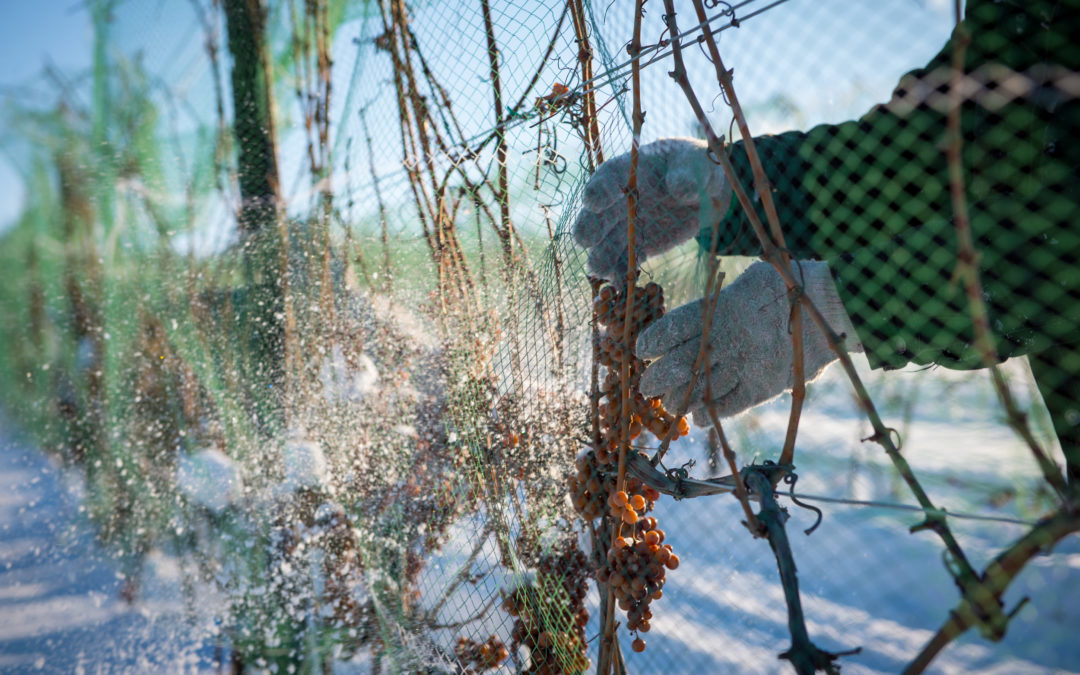Ice wine harvest requires very specific circumstances. The wine must be harvested in below-freezing temperatures and pressed quickly to avoid letting the grapes unfreeze. Northern Michigan is one of the few states in the U.S. (along with New York) that can sustain temperatures low enough to create ice wines. Thanks to our lake effect snow, our grapes can remain safely nestled in snowbanks, keeping critters from getting to them while also allowing them to build up high sugar content and reach their freezing temperatures. Mari Vineyards completed an Ice Wine harvest in 2019, read about how it went below:
“We had planned to harvest our ice wine on December 11th. Our winemaker (Sean O’Keefe) texted early in the morning to let us know that the temperatures were climbing too quick, and it looked as though it would be reaching near 30 degrees that day, so the harvest was delayed. One week later, on December 18th, we awoke to a gusty wind chill and temps dipping below 15 degrees; harvest was on! Myself and two of the winery team workers arrived at Jamieson vineyard (our closest vineyard to the winery) to harvest ice wine around 9 am, though the rest of the team had started at 8 am. We were amongst about 10 other people working on the harvest. There were at least seven of us picking the clusters off the vines (O’Keefe included), the operations manager of our vineyard team Mutual Farm Management (MFM) facilitating & helping harvest, and two of the MFM crew members picking up filled buckets and tossing out empty ones for us to use.
The harvesting process was slow going. Harvesting the grape clusters requires looking not only on the vines but also under the snow. Clusters can fall onto the ground and get covered in snow and still remain healthy and ripe for ice wine harvest. Clippers (or snips) aren’t needed to get the clusters off the vine; they’re so frozen solid that you can snap them right off at the stem. After spending about an hour working on a single row, we were as frozen as the grapes. Around 3 pm, the grapes were being transported to the winery. The grapes were then dumped into our bladder press. Since the juice coming out of the grapes is near frozen and highly concentrated, it comes out in a pencil-thin stream, rather than the full flow that occurs when pressing unfrozen grapes in the fall. This meant that the winery team was pulling shifts for three days, watching the press morning and night to make sure everything ran smoothly, no blockages occur, and to monitor filling the stainless steel tanks.
Currently, our ice wine is sitting in fermentation. This process takes a very long time due to the high concentration of sugars in the wine. Additionally, it’s always a gamble to leave the grapes on the vine after harvest. Animals, mold/fungus, pests, and weather can all be enemies of grapes. Making ice wine is a lengthy and risky process, but when done right, it’s worth its weight in liquid gold.”
-Jenna Veiga, Marketing & Events Manager, Mari Vineyards

